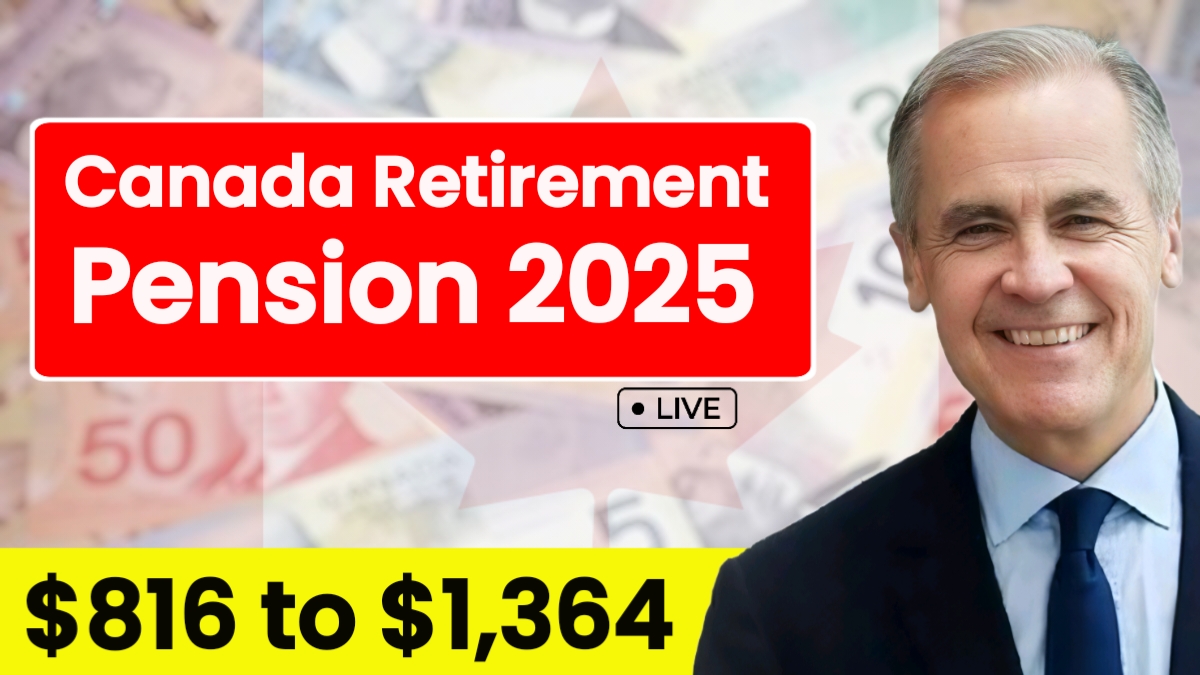Canada Retirement Pension 2025 monthly payments are set between $816 and $1,364, and millions of Canadians are looking at these figures to plan their post-work life. The Canada Pension Plan (CPP) remains one of the country’s most vital income sources after retirement. Whether you’re preparing to leave the workforce soon or decades away from retirement, knowing how much you can expect to receive is key to making informed financial decisions and living comfortably.
How payments are calculated in 2025
In 2025, CPP payments are based entirely on how much you contributed throughout your working years and how long you contributed. Individuals who consistently earned a high income and made maximum contributions can receive up to $1,364 per month at age 65. On the other hand, workers with part-time jobs, gaps in employment, or low wages may receive closer to $816 monthly. The payment structure rewards those with long and steady contribution histories, and small changes in earnings can make a noticeable difference.
When should you start your pension?
Timing your pension start date has a major effect on your monthly benefit. Starting early at age 60 leads to a reduction of about 36%, bringing the maximum down to around $872. Waiting until the standard age of 65 earns you the full amount of $1,364. But if you delay it until 70, your pension increases by 42%, reaching about $1,936 monthly. Choosing the best time depends on your health, employment status, other income sources, and whether you need immediate funds or can afford to wait for more.
Who qualifies to receive CPP in 2025
To qualify for the Canada Retirement Pension in 2025, you must be at least 60 years old and have contributed to CPP during at least one year of employment. You should have earned more than $3,500 annually to be eligible for contributions. Even Canadians who lived or worked abroad may qualify under international agreements. Residents, immigrants, and returning citizens should verify their status and contribution history with Service Canada to avoid surprises at retirement.
Understanding contributions and earnings
CPP contributions in 2025 are deducted from earnings above the basic exemption of $3,500. The maximum contribution for employees is $3,166.45, with self-employed individuals paying both employee and employer portions. These contributions directly affect your future monthly income. Those who contributed regularly and at higher earnings will see more generous retirement benefits. If you’re self-employed or had gaps in work history, tracking and possibly increasing voluntary contributions could boost future payments.
What happens with spouses and partners
CPP isn’t only about individual retirement—it also supports families. If your spouse or common-law partner passes away, you may be eligible for survivor benefits worth up to 60% of their CPP. Couples may also apply for pension sharing to reduce their tax burden and balance their retirement income. If you’ve divorced or separated, your CPP credits during the relationship can be split, ensuring fair treatment and accurate pension calculations for both partners.
Maximizing your pension over time
Several strategic steps can help you maximize CPP benefits. Delaying your pension start date until age 70 increases your monthly income significantly. Even working part-time in later years helps fill contribution gaps. Reviewing your personal record through My Service Canada Account ensures all past contributions are correctly logged. Those with inconsistent employment can explore voluntary payments to top up their pension and secure a stronger monthly income in retirement.
How to apply and avoid delays
Applying for CPP is a straightforward process, especially if done online through My Service Canada Account. Applications can also be submitted by mail or phone. It’s recommended to apply at least six months in advance to ensure timely approval. You’ll need your Social Insurance Number, banking information for direct deposit, and possibly your employment history. Starting early and double-checking documentation can help avoid delays and ensure the first payment arrives when expected.
What your choices mean in real dollars
The monthly difference in CPP amounts based on your start age is significant. Choosing to take benefits at age 60 could limit your payments to $872, while waiting until 70 could earn you approximately $1,936 monthly. This choice can make or break your retirement plan. The right decision depends on your personal needs, life expectancy, and whether you have other income streams like Old Age Security (OAS), RRSPs, or employer pensions to rely on during retirement.
Disclaimer: This article is intended for informational purposes only. CPP amounts, eligibility rules, and tax implications are subject to change by the Government of Canada. For personalized advice or the latest updates, consult the official Service Canada website or speak to a certified financial advisor.







